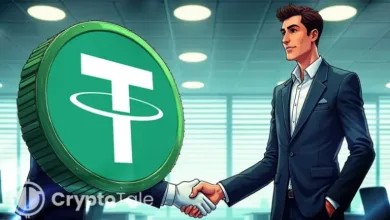Cathie Wood Supports ETH Upgrade; Traders Push Back Hard

- Cathie praised Ethereum’s upgrade plans, though she admitted she lacked full knowledge.
- Some traders accused her of promoting ETH without using it or knowing how it works.
- The upgrade will use zero-knowledge tech to help ETH scale faster while staying secure.
Cathie Wood, CEO of ARK Invest, voiced support for the Ethereum Foundation’s recent proposals to enhance scalability and privacy. While admitting limited technical understanding, she said the foundation appears to be “proposing the right moves.” Her endorsement follows Ethereum’s post announcing plans to integrate zero-knowledge proofs into the base protocol, aimed at increasing transaction efficiency and privacy.
Despite the institutional validation, several figures in the crypto community questioned Wood’s credibility. Trader MartyParty criticized her endorsement, stating she shouldn’t promote what she doesn’t use. “If you don’t use a product, don’t shill it, please,” he posted. Market analyst Christopher Kocurek also weighed in, bluntly asking her to delete the post, reinforcing the belief that public commentary without real engagement lacks substance.
The Ethereum Foundation’s latest upgrade proposal has become a focal point of friction between traditional finance leaders and grassroots crypto voices, revealing a cultural divide over what constitutes meaningful involvement in decentralized technology.
Ethereum Targets zkEVM and Stateless Verifiers for L1 Upgrade
According to the Ethereum Foundation’s official blog post on July 10, Ethereum is moving to adopt zero-knowledge (ZK) technology across all levels of its protocol. The post read, “Ethereum is going all in on ZK,” and explained the network’s long-term vision of using ZK proofs for everything from consensus layer signature aggregation to onchain privacy.
The initial step involves integrating a layer-1 zkEVM and making the Ethereum Virtual Machine more ZK-friendly. This includes EIP-2537 (set for the Pectra fork) and stateless verifiers that enable zk-proof validation directly within the consensus layer. These upgrades are designed to streamline transaction verification, reduce node workloads, and improve the network’s scalability without compromising security or decentralization.
Raye Hadi, a crypto analyst, elaborated on how the mechanism functions. He said block builders first group transactions, then provers, either builders, validators, or third-party zk-provers, generate a proof confirming the block’s validity. Validators then verify the proof instead of re-executing every transaction, significantly increasing throughput.
Community Voices Raise Concerns Over Use
Though Wood cited ARK’s research associate, who noted Ethereum’s bullish fundamentals, community members were not convinced. Wood shared, “The math is mathin,” referring to ETH flowing into ETFs faster than issuance on-chain, suggesting a supply squeeze. Yet critics were quick to point out that support without actual participation rings hollow in crypto spaces that value hands-on involvement.
This skepticism is rooted in Ethereum’s technical complexity. Users regularly report difficulties with basic wallet functions, and critics argue that public figures should only endorse technologies they use. MartyParty’s comments reflect broader frustration with endorsements viewed as superficial.
Related: Ethereum Foundation Reveals New Long-Term Ecosystem Growth Strategy
Despite the institutional excitement, concerns remain regarding implementation and execution risks, as well as centralization. Hadi cautioned that although the number of validators has decreased to promote decentralization, the complexity of proving now falls to block builders. Failure in network liveness may occur when such builders either conspire or malfunction.
Hadi also provided the performance goals of the Ethereum Foundation, which include proving block proofs in under ten seconds, with hardware overheads of less than $100,000, and proof sizes of less than 300 KiB, all while being bandwidth efficient. >=128-bit quantum-resistant is the other goal of the protocol.
These developments underscore Ethereum’s growing pains as it attempts to balance institutional expectations with the core values of decentralization. While the Foundation pushes forward with technical upgrades like zkEVM and stateless verifiers, the community remains cautious.




